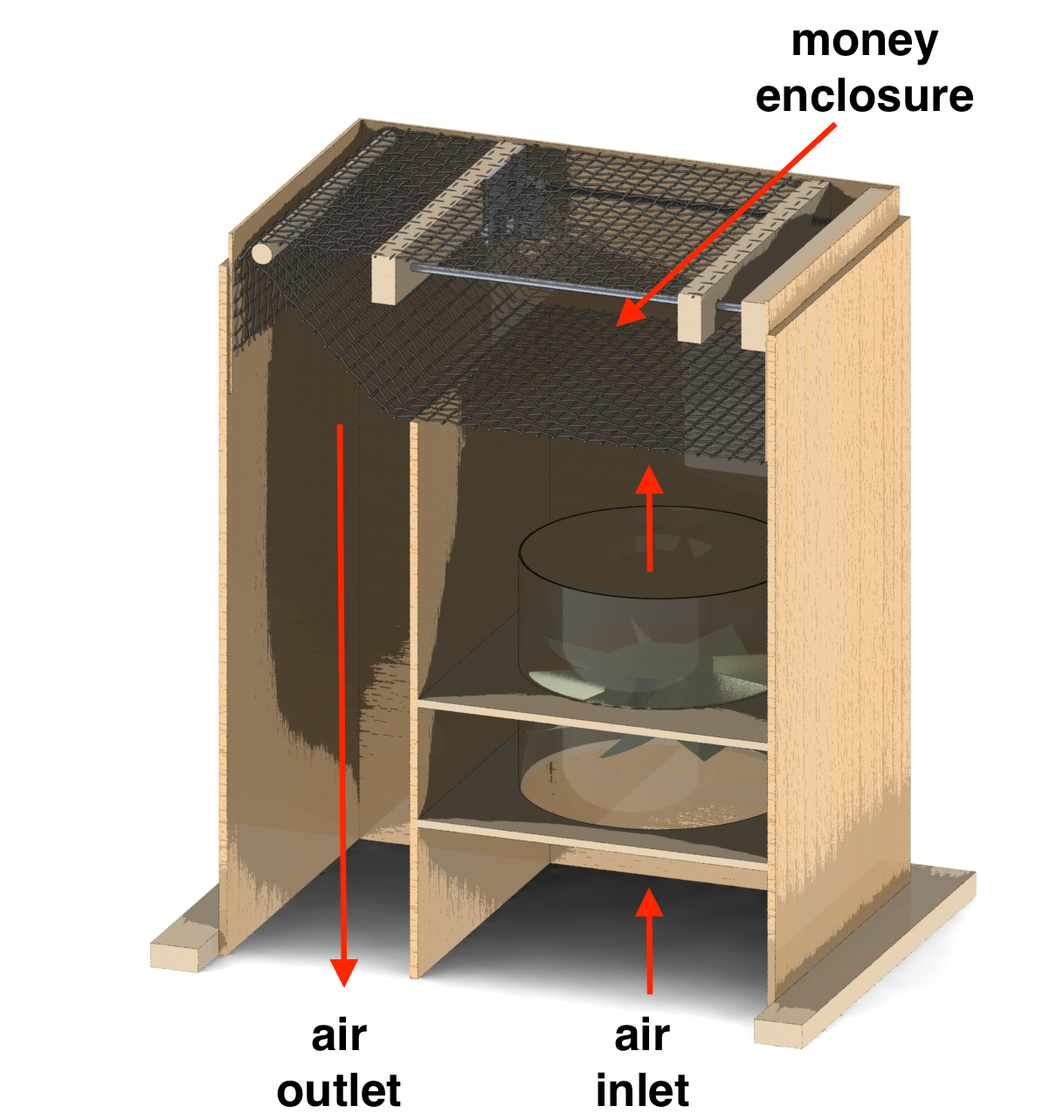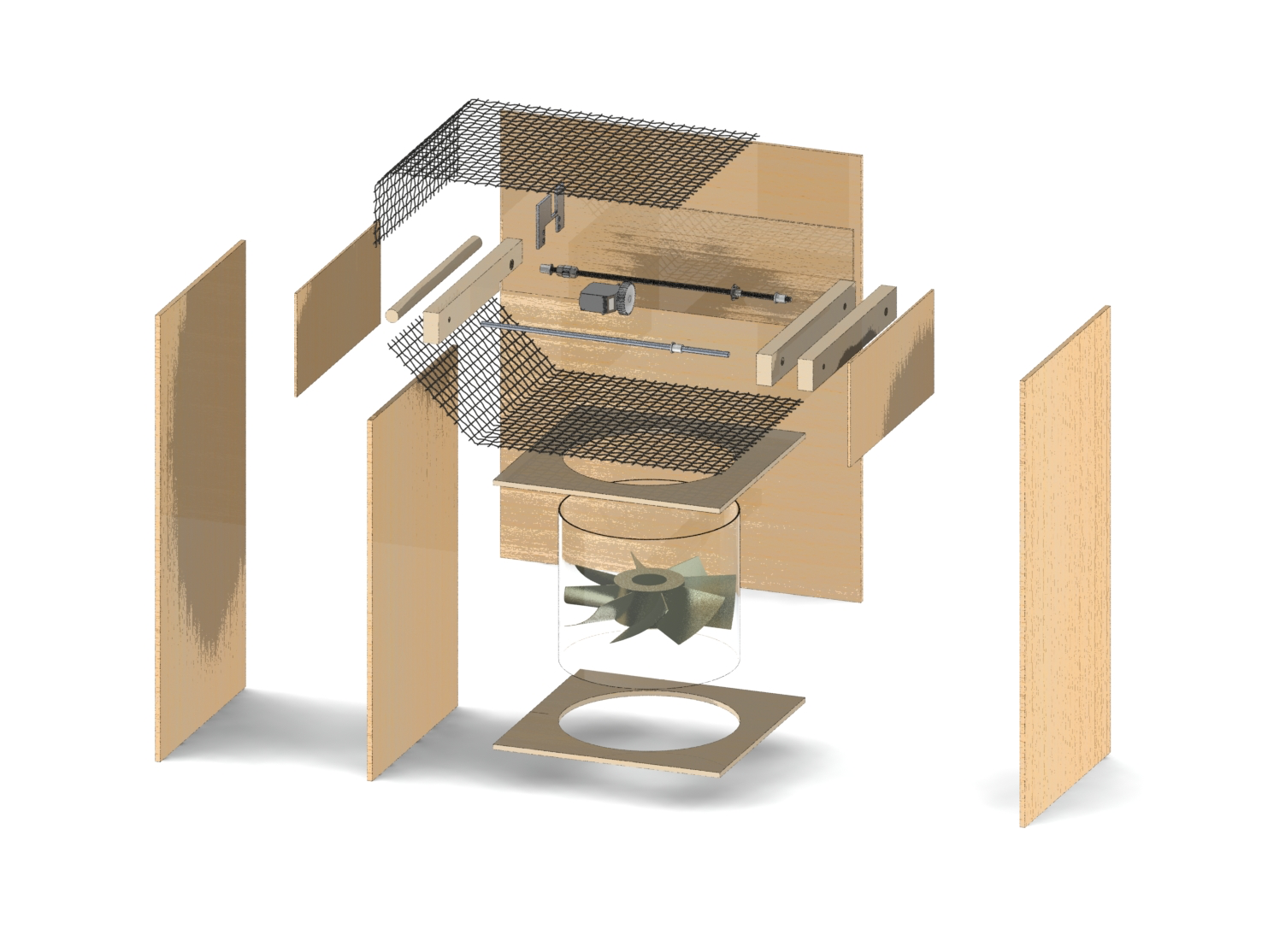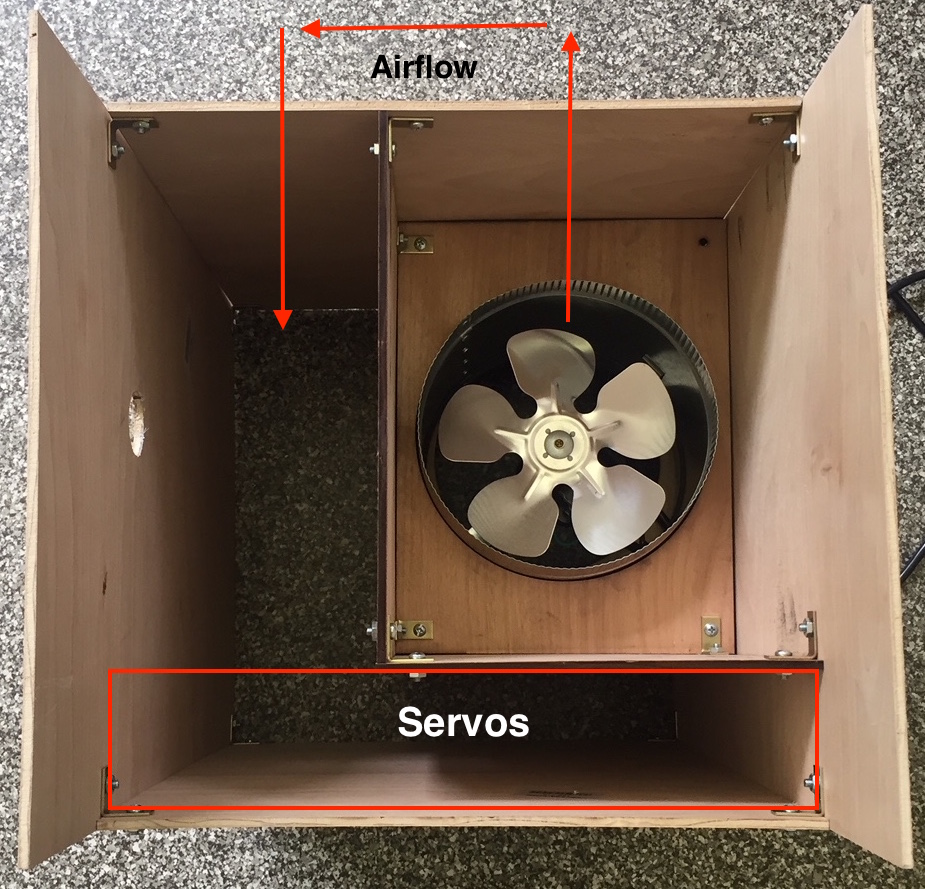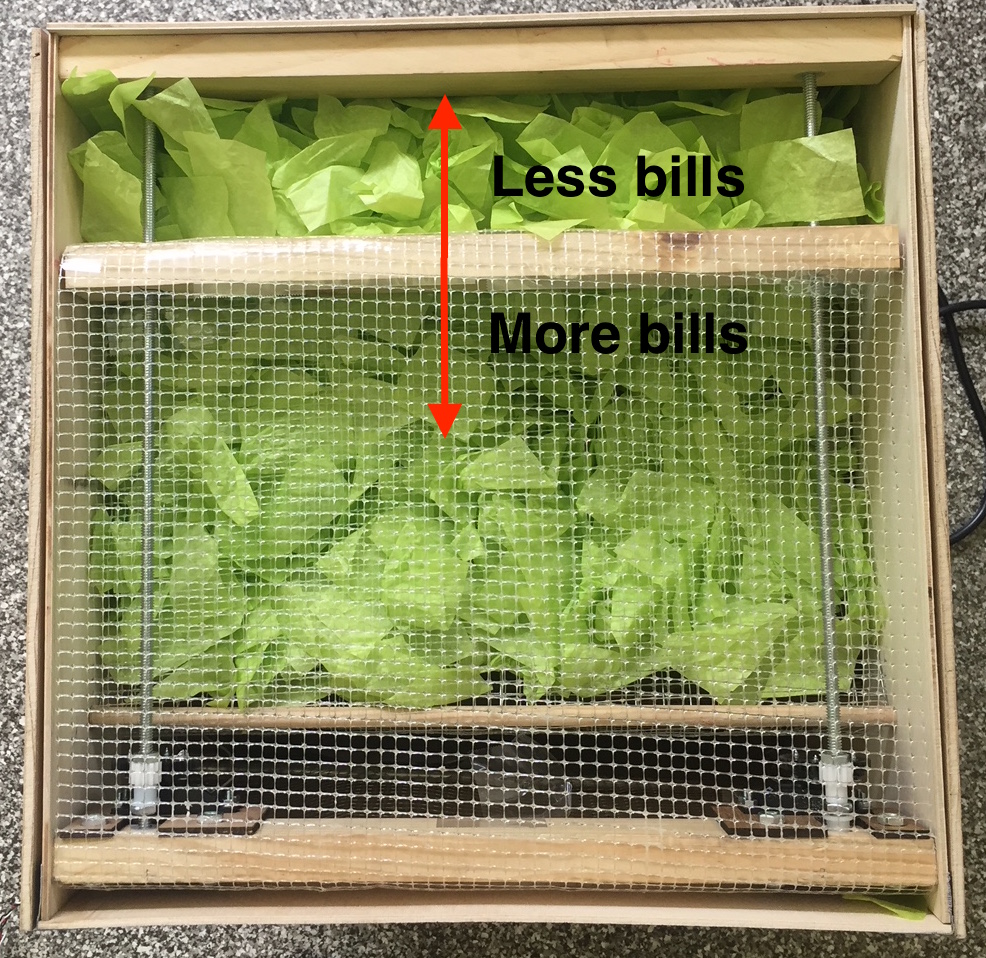Subassembly


An integral component of the Vacuumed Treasures concept is the experience of accumulating a treasure. We have decided to present the team of bank robbers with an empty, clear “treasure chest” at the top of the vacuum, which gradually fills up as the team connects the vacuum to the bank lockers and sucks cash out of their keyholes.


In order to achieve this accumulation effect in an automatically resettable fashion, we proposed using a hidden fan at the bottom of the vacuum box which would turn on at the rotation of the crank, providing some audible feedback to the team member stationed at the crank (the fan can be seen below, where the screen mechanism assembly has been removed). The bills would always reside inside the vacuum box, initially hidden between metallic meshes below the clear bin. As shown below, the metallic screen is moved out of the airflow of the fan, such that bills appear in the box. The amount of bills is controlled by the motion of the screen, which responds to the number of hoses successfully connected to the bank lockers. The motion of the screen is accomplished by the rotation of two continuous rotation servos which drive a set of threaded rods that in turn shift a support beam for the fixed end of the screen. The sliding screen is able to open and close in a little over 2 minutes using a 1:3 gearing ratio. If this time is not sufficient to reset between groups, shifting to a larger DC motor should be sufficient.
At the end of the game, the room controller can turn off the fan, and cycle the screen to the open and then closed position to ensure that all the bills are once again in the compartment, ready for the next team of players.
The implementation of this system for the class prototype was successful throughout our testing, up and until the demo, when the reflective IR sensor got damaged minutes prior to closing the box. This reflective IR sensor was used to detect the rotation of the crank which was internally painted in two different colors that would either reflect or absorb the IR spectrum. A microcontroller would read the IR receiver and decide whether or not to turn on a power relay which would in turn power the fan.
For the remainder of the bill of materials, please refer to this link.
After building and testing this prototype, we believe that these mechanisms could be developed further with larger DC motors and a metallic construction to fulfill the robustness criterion of 5wits. The mounting of the IR Reflective sensor (IR emitter and receiver) on the crank should be dutifully considered to ensure reliability and an extended life. During our progress review with Prof. Wallace he suggested that we implement an off-the-shelf dust vacuum/vortex system such as this one instead. As we were far along in the design and prototyping stage and had committed our budget to this design, we opted to continue on our internal assembly. If the idea were to be implemented or we had additional time and budget resources, testing out the dust vacuum/cyclone system would be one of our next steps.